For those who are curious about the Fox’s origins: the statue was a gift from Senator Murray Sams and was originally accompanied by another statue of a cat. President Hamilton Holt had admired these pieces for years; in 1929 he wrote his friend that they “have long appealed to my antique sense” and he believed they would be “fittingly enshrined” at Rollins. Senator and Mrs. Sams donated them to the College in 1934, where they were displayed on pedestals near the old Recreation Hall.
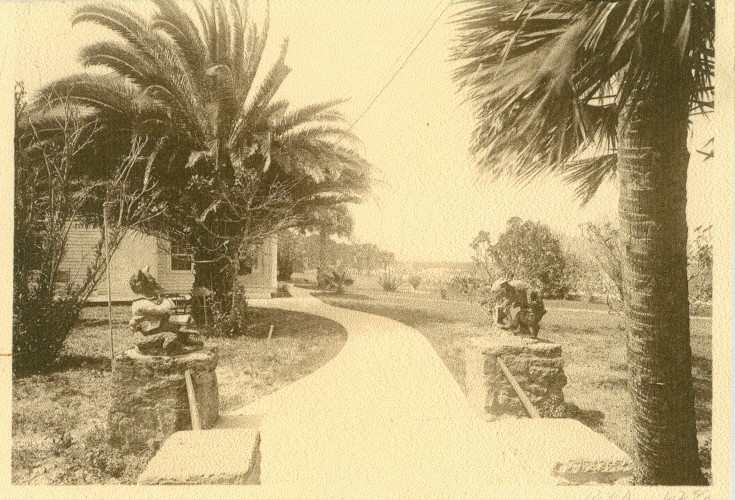 The Fox and the Cat at the Ocean House Hotel (the former home of Murray Sams), New Smyrna
The Fox and the Cat at the Ocean House Hotel (the former home of Murray Sams), New Smyrna
Below: the Fox (now missing his book and part of his leg) and the Cat on campus, 1937. These students were elected to the Order of the Cat and the Fox, an honorary society that was active until 1944-45.
In 1959 Genevieve Sams, the wife of the Senator, visited the campus and asked about the statues. By then, the Cat had been destroyed (the location of its remains is unknown), and the Fox appeared only on the College’s annual holiday. Royle Howard, secretary to the Archives, wrote to update Mrs. Sams: “The poor cat has met with a fatal accident, but the Fox is a treasured possession of the College, and when he comes out of hiding, an occasion of much joy!”
Mrs. Sams gave the Archives as much background information on the statues as she could. They originally came from France, she said, and although it was “hearsay,” she had been told that these were satirical pieces, depicting “the Populace (Cat) making his sweeping bow in hypocritical salute to the Papacy (Fox).”
As it turns out, a sly, tricky character known as Reynard the Fox first appeared in popular allegorical tales originating in Medieval Europe–satires, as Mrs. Sams had reported. According to an 1865 edition of Reynard the Fox, the character was said to be inspired by “a certain Earl Reynard, or Reginard. . .who lived in the tenth Century of our Era, [and who] being outlawed and persecuted by his Sovereign, found means, by dint of his slyness, to elude all the persecutions of his King, insomuch that his name had become proverbial, as denoting a sly and cunning person ; and it is supposed by many, that the adventures of this Earl furnished the first materials for the fable” (Reynard the Fox: A Burlesque Poem from the Low-German Original of the Fifteenth Century. New York: Charles Scribner, 1865).
As Prof. Jana Mathews explains, “Reynard the Fox populates a genre of medieval writing known as the bestiary. These popular fables featuring animal protagonists are characterized by their heavy-handed moral message. Reynard assumes the role of the quintessential bad boy in texts like Chaucer’s The Nun’s Priest’s Tale and Robert Henryson’s Morall Fabillis, being portrayed simultaneously as a cynical trickster and astute opportunist. If someone accused you of being “crazy as a fox” in the fourteenth century, you’d take that as a compliment!”
These stories have been published for hundreds of years and continue to be read today.
 An early 18th-Century edition of The Most Delectable History of Reynard the Fox, Newly Corrected and Purged, from all grossness in Phrase and Matter (photo by David Brass Rare Books, Inc.)
An early 18th-Century edition of The Most Delectable History of Reynard the Fox, Newly Corrected and Purged, from all grossness in Phrase and Matter (photo by David Brass Rare Books, Inc.)
Below is a classic illustration from The Comical Creatures from Wurtemburg (2nd ed., 1851), showing the cat and the fox in familiar poses:
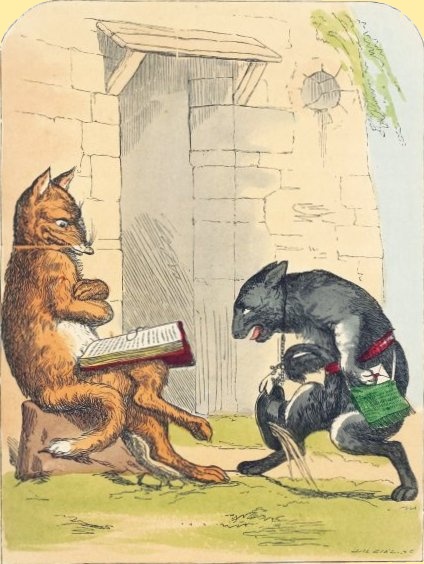 Sir Tibert the Cat delivering a message to Reynard the Fox (from Project Gutenberg, http://www.gutenberg.org/files/28508/28508-h/28508-h.htm)
Sir Tibert the Cat delivering a message to Reynard the Fox (from Project Gutenberg, http://www.gutenberg.org/files/28508/28508-h/28508-h.htm)
A beautifully illustrated edition by Alain Vaes was published in 1994:
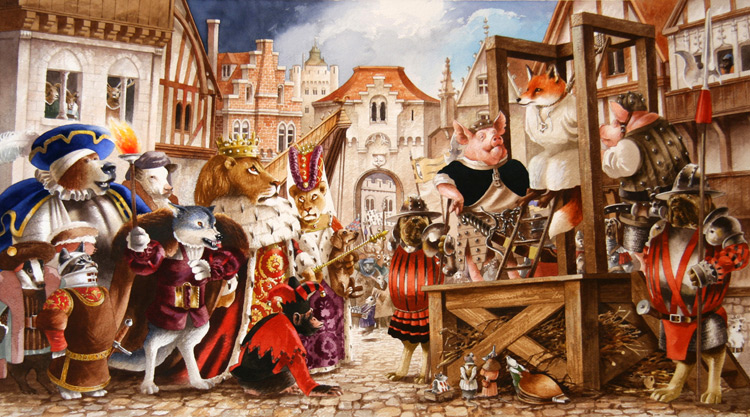 Illustration by Alain Vaes, from his book Reynard the Fox (Atlanta, GA: Turner Pub, 1994)
Illustration by Alain Vaes, from his book Reynard the Fox (Atlanta, GA: Turner Pub, 1994)
The 15th-century poem introduces the Fox’s tale this way:
It happen’d on a Whitsunday,
When woods and fields look’d green and gay,
When balmy flow’rs and herbs were springing
And feather’d folks were sweetly singing ;
The Morn was fine, the weather clear,
And fragrant odours fill’d the air,
When Noble, sov’reign King of Beasts,
Proclaim’d a Court and public feasts.
It sounds like–Fox Day!
~ by D. Moore, Archival Specialist
To find books about Reynard the Fox in the Olin Library, please search our online catalog at http://www.rollins.edu/library/find/findbooks.html .

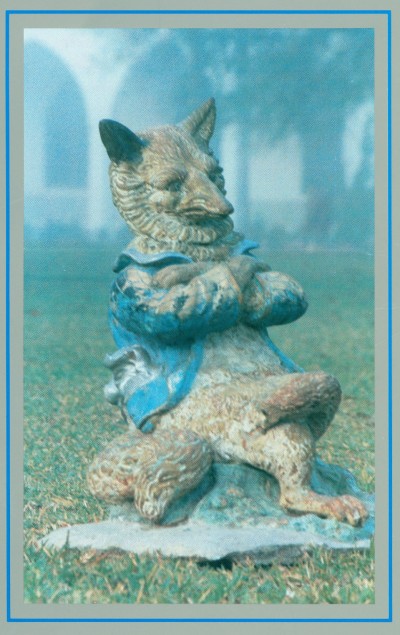
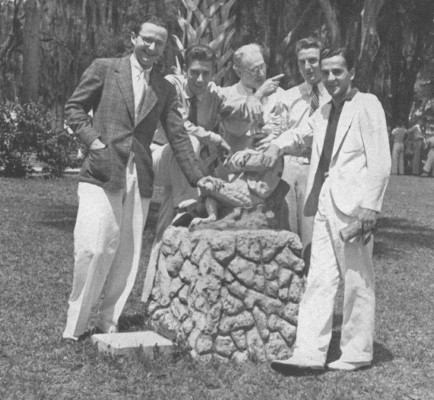
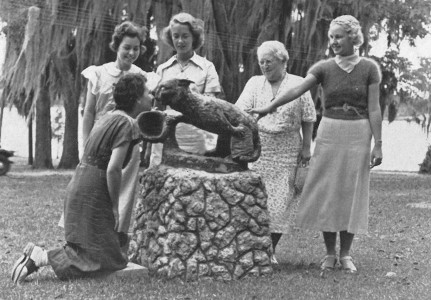
Love it! As always, I learned so much. Thank you.
Sir Tibert and Reynard certainly look like the subject of our statue(s). And the poem DOES sound like today’s Fox Day, without the gallows.
Great research and story. May be you could also mention that before President McKean lauched the Fox Day in the 1950s, there was the tradition of Fox and Cat Clubs at Rollins, which may play a role in the dimise of the cat during the Holt Era.
Dear Wenxian,
I’ve added a mention of the Order of the Cat and the Fox. Thank you!
~Darla
Thanks for sharing! This is a great story and sheds some light onto the mysterious origins of the statue and the concept behind it!
Truly fascinating. I will never look at the fox the same way again…
I’ve recently discovered that another copy of that fox sits amid ivy in a yard several blocks from my house. — Jody